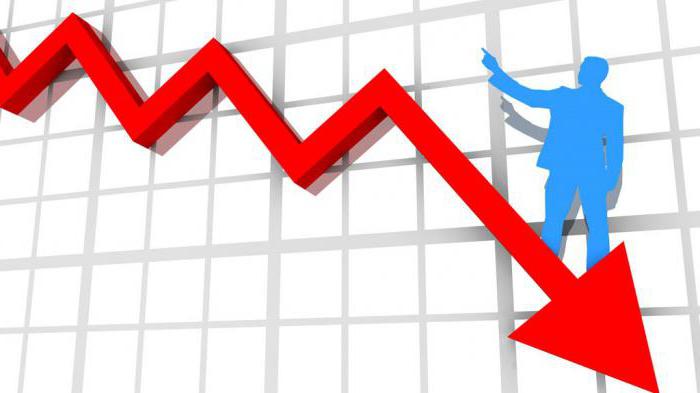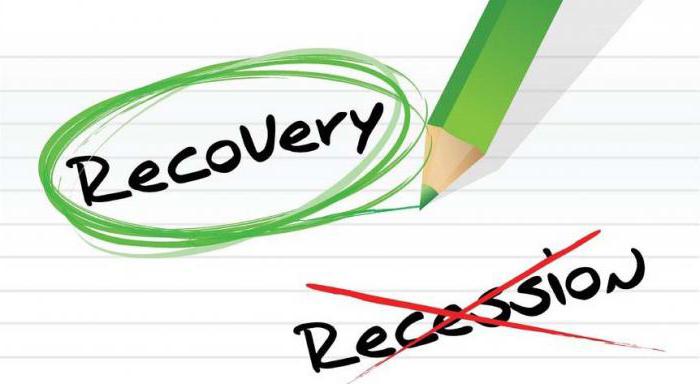A recession is a reduction in business activity that leads to a general slowdown in growth. Macroeconomic indicators such as gross domestic product (GDP), investment, capacity utilization, household income, business profits and inflation are falling, and bankruptcies and unemployment are rising.
The period of recession in the economy is due to the comprehensive spread of cost reductions. This is the so-called adverse shock of demand. It can be caused by events such as the financial crisis, problems in foreign trade, and the “rupture” of the economic bubble. National governments are trying to overcome recessions through expansionary policies. To do this, they can increase the supply of money, increase government spending and reduce taxation.

Definition
In an article published in the New York Times in 1979, Julius Shishkin proposed several rules of thumb for defining a recession. The most famous of them is associated with a fall in GDP for two consecutive quarters. A number of economists believe that the recession is an increase in unemployment by 1.5-2% over the past twelve months. In the United States, a separate committee of the National Bureau of Economic Research deals with this issue. This organization gives the following definition: recession is a significant decrease in business activity in all sectors of the national economy, which lasts more than several months. Indicators such as GDP, real income, unemployment, output, wholesale and retail sales are taken into account. The definition of the National Bureau of Economic Research is generally accepted. According to British standards, a recession is a fall in real GDP for two consecutive quarters. The same definition is accepted in the European Union.

Specifications
The economic recession includes a number of negative phenomena that can occur simultaneously. The fall in GDP is caused by a decrease in its component components: consumption, investment, government spending and net exports. These generalized indicators reflect the internal causes of the recession. These include: the level of employment, the level of household savings, interest rates, demographic characteristics and the inefficiency of national government policies.
A severe (10% fall in GDP) or long-term (three to four years) recession is called economic depression. However, some researchers believe that these phenomena have different internal causes and methods of overcoming.
Types and Forms
Economists have so far failed to develop a unified economic theory or classification of recession. However, there are unofficial names of the four main types in accordance with their form: V-, U-, W- and L-shaped. The letter displays the features of the graph. Similar informal names are accepted for types of economic recovery. The word "recession" scares much less if you understand what it is and how to deal with this phenomenon.

Psychological aspects
Suppose a company expects a slowdown in business activity. What will she do in this case? Naturally, it will try to reduce inefficient employees, stop investing and start saving more money. This is a psychological aspect.And its action exacerbates the situation in the economy. Consumer confidence is another important point. If people expect a deepening recession, they will try to save more money, reducing the volume of purchases.

Liquidity trap
Keynesianism considers a situation where interest rates are close to zero, but this still does not stimulate the economy. In theory, they should have encouraged businesses and individuals to take more loans and expand their expenses. In practice, this often does not happen. If too many people or corporations concentrate on saving or paying off their previous debts, then low interest rates can have practically no effect. Economist Paul Krugman calls the 2009 recession in the US and the lost decade in Japan liquidity traps. The only way out of this situation, in his opinion, is to increase the money supply. The government must create inflationary expectations to force people and corporations to expand their consumption.
Prognostic factors
There is no accurate indicator that would allow us to assess the likelihood of a recession. However, the prognostic indicators include the following:
- Zero coupon yield curve.
- Changes in unemployment rate over the past three months.
- Index of the most significant economic indicators (includes some of the indicators listed above).
- Lower asset prices (e.g. real estate).
- High rate of personal and corporate debt.
